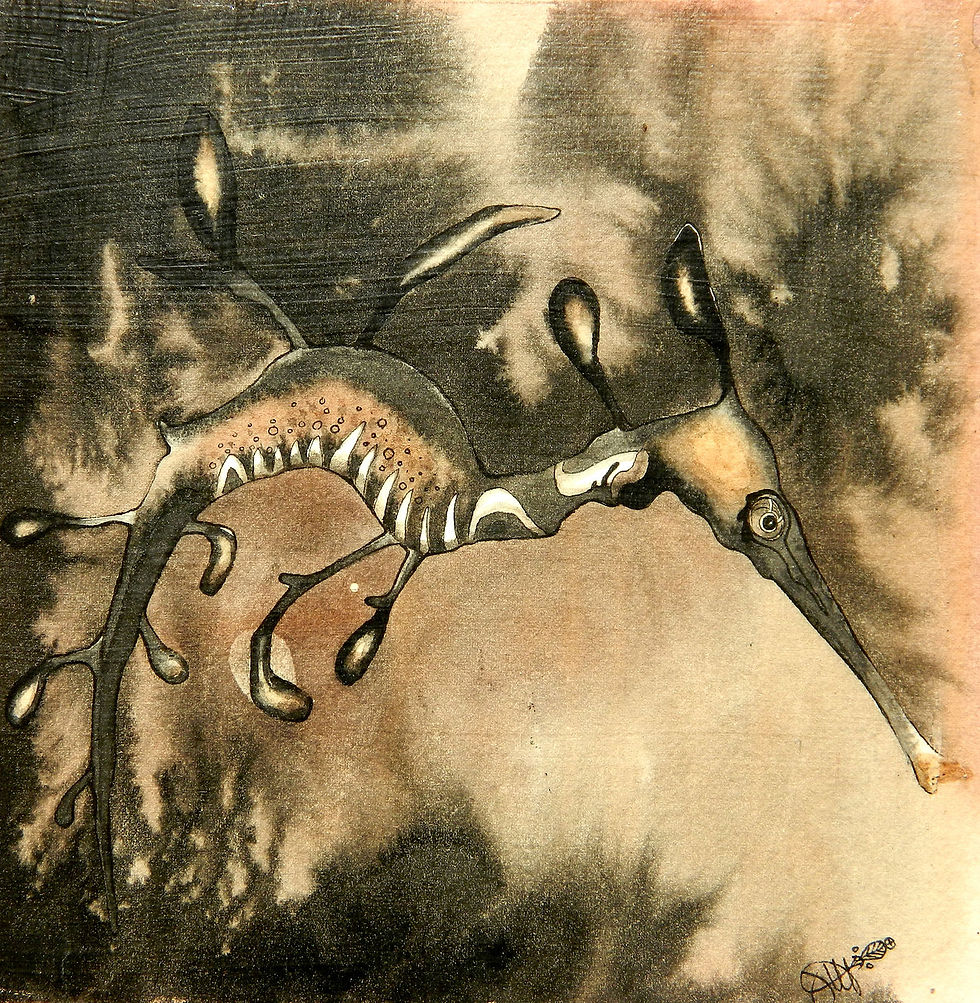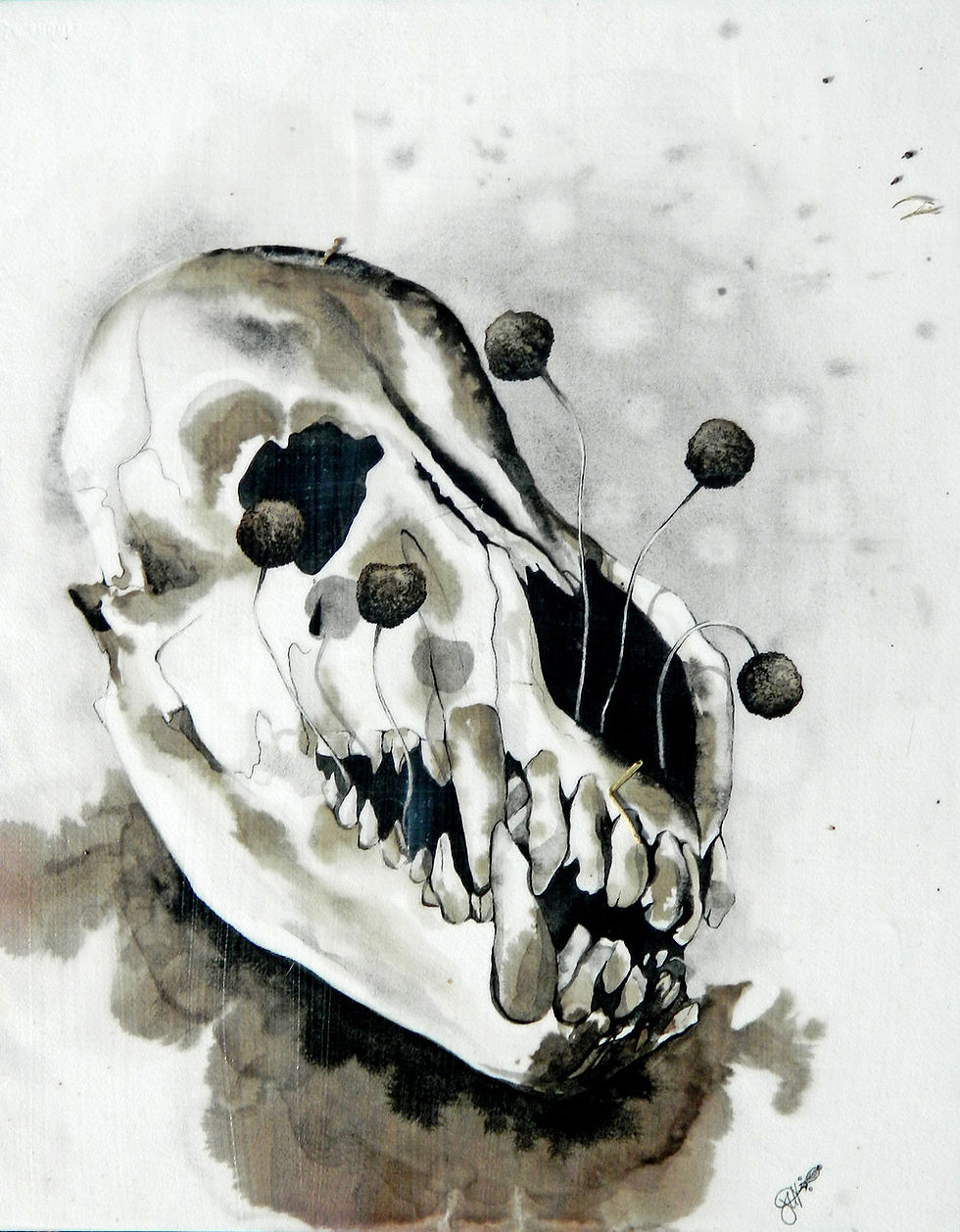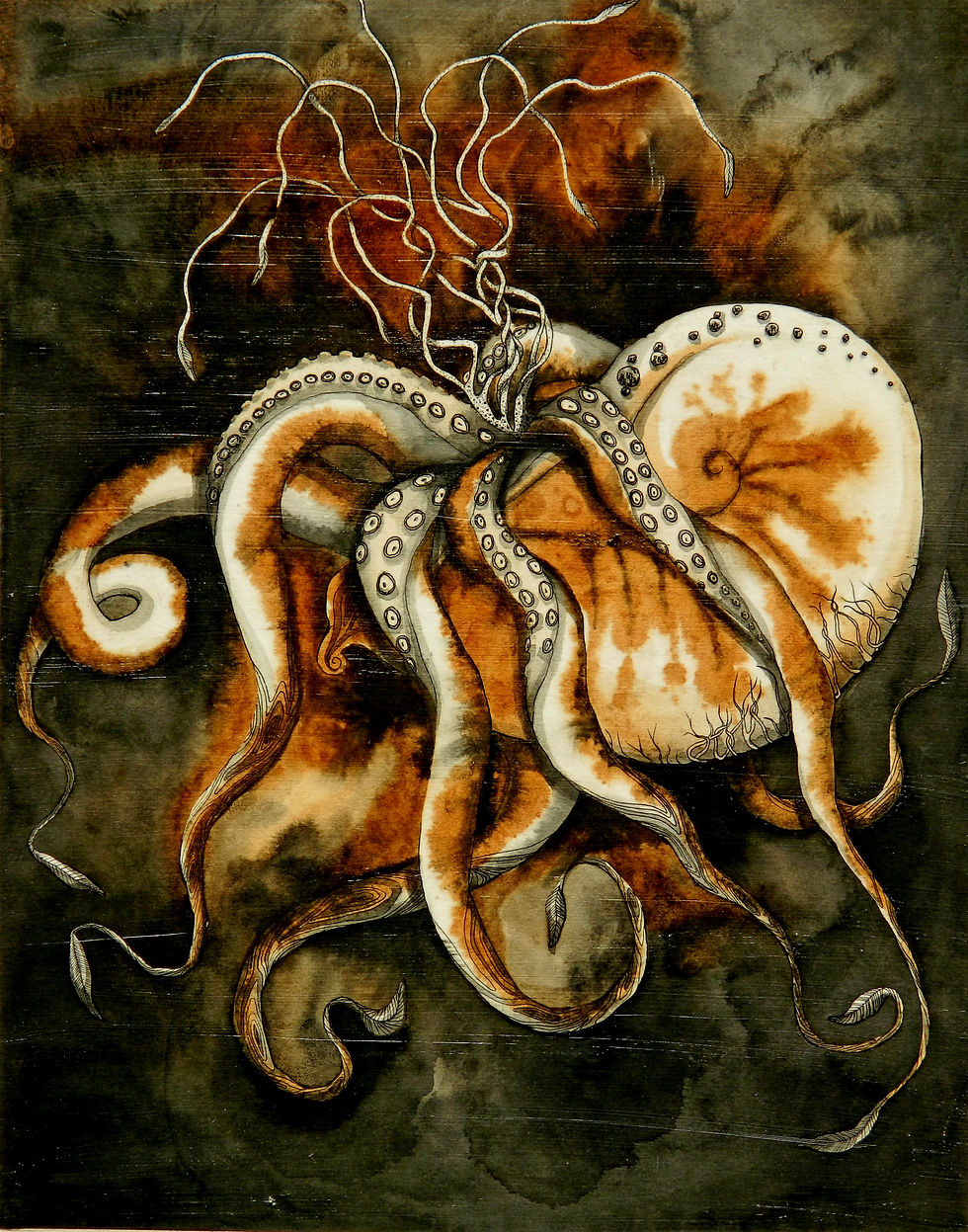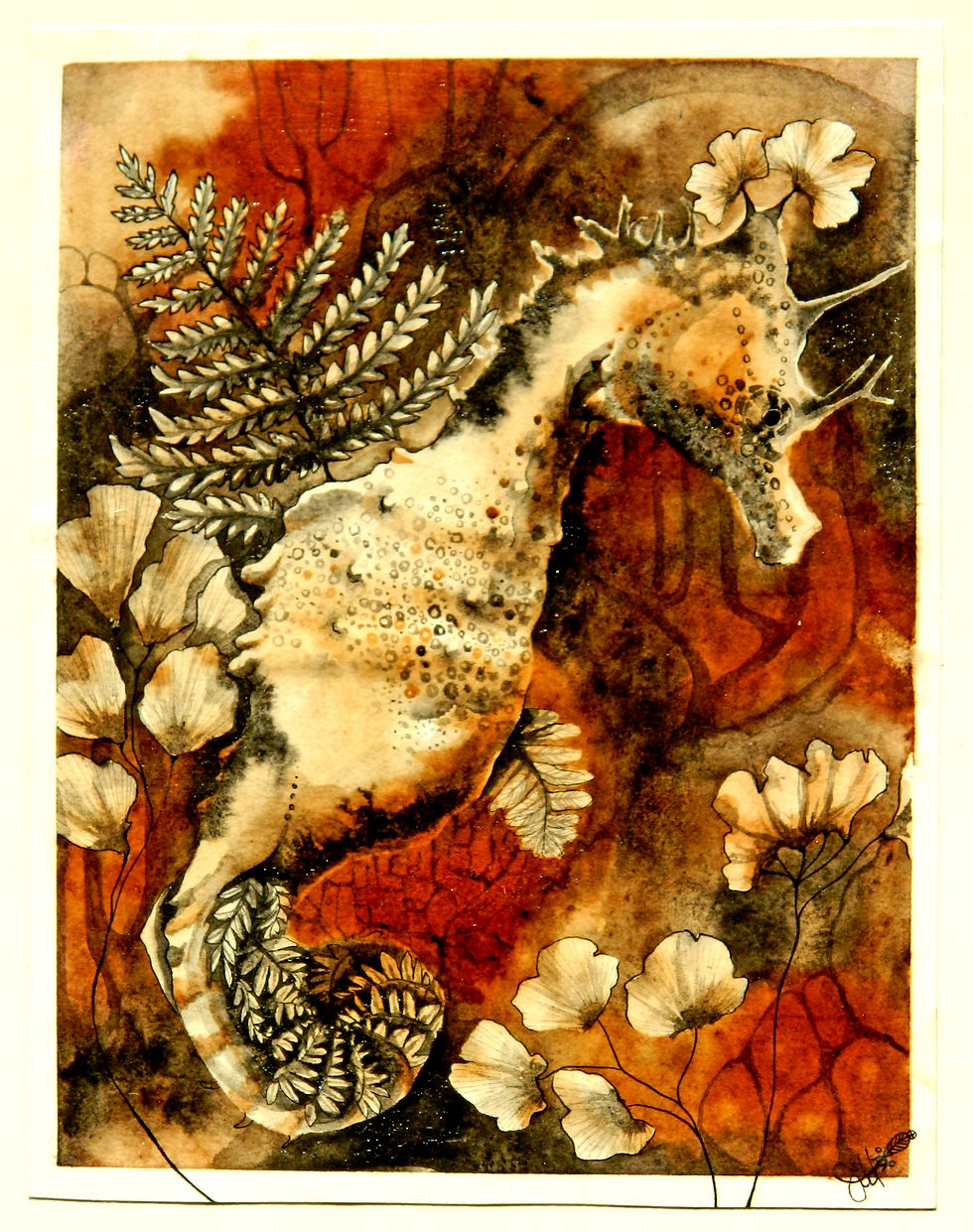
Tinta y tinto: wine and fungal ink as mediums
Press
Ann Brody Guy, 2013. The Alchemy of Art and Science: Jennifer Harrower. Breakthroughs magazine. http://nature.berkeley.edu/breakthroughs/sp13/jennifer-harrower
Jessica Yadegaran, 2012. (cover feature) Painting with pinot: Berkeley artist Juniper Harrower's tannic palette. Oakland Tribune.
Matt Graham, 2011. The art and science of Juniper Harrower’s wine art: Tinta y Tinto. Buenos Aires Herald.
Publication
Harrower, J, 2014. "Big Horned," The STEAM Journal: Vol. 1: Iss. 2, Article 9. doi:10.5642/steam.20140102.9
During an artist residency in Argentina I became fascinated by the deep cultural history and natural beauty of Buenos Aires and how industrialization and culture interface with wild spaces. An exploration in form and materiality, these painted studies were created with urban and rural found objects, natural history museum specimens, and local models. These paintings are created using human and nature made pigments - red wine and fungal ink - to highlight the often toxic juxtaposition of the nature/culture divide. By using experimental pigments I engage the temporality of these natural and organic mediums which will change over time, also alluding to the human process of forgetting.
The wine industry is deeply rooted in Argentine culture with different stories, methods of productions and entangled family histories that vary dramatically across historical time and between urban and rural landscapes. Engaging red wine as a cultural medium, I use a novel process of oxidation, reduction, chemical change, and light manipulation, to stain and color heavy watercolor paper with the resultant wine pigment. Additionally I use a black ink that I collect and prepare from the common ink cap mushroom Coprinopsis atramentaria - edible except when paired with alcohol (also known as "tippler's bane"). If consumed together, they would become a poisonous concoction, making this duo a powerful combination referencing tensions between nature and culture.
Every wine has a different shade, changing also upon oxidation to various time points and light exposure. I have worked with and developed this medium for many years learning the particular movements and interactions of these substances with the resultant color combinations and timescales. When the piece is complete, I can halt the oxidation process with a fixative, and then apply a final sealant to protect against UV damage.
























